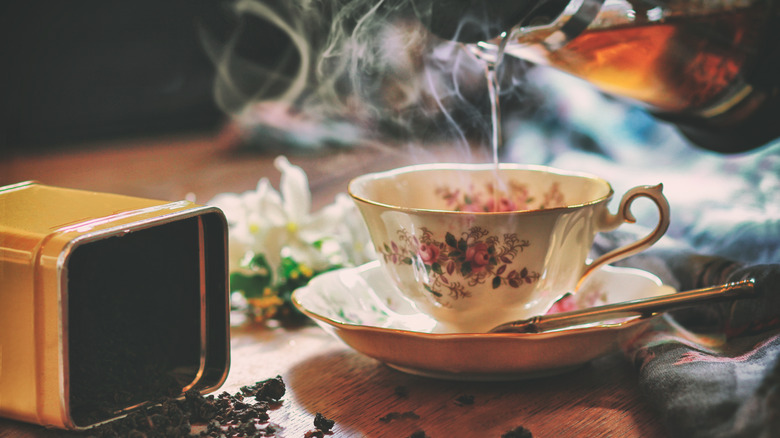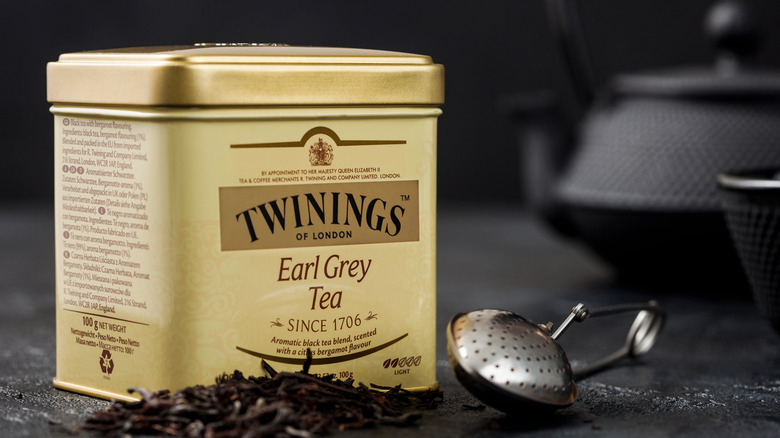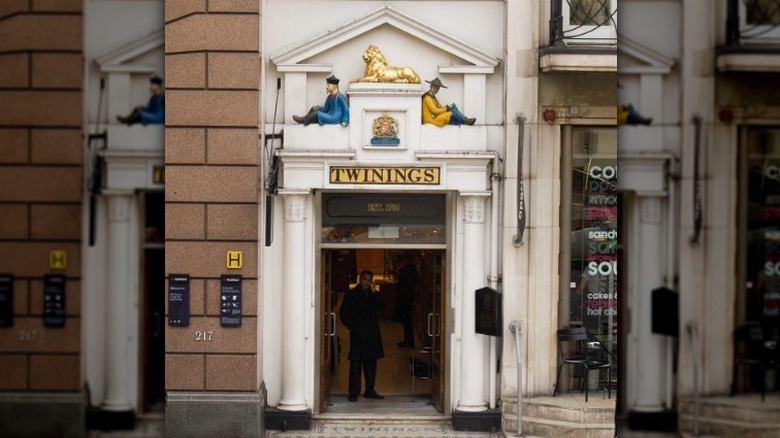The Original Shop Where Twinings Tea Began Still Stands 3 Centuries Later
On a historic street between London's theatre district and St. Paul's Cathedral, just a flap of a pigeon's wings from the River Thames stands one of the city's oldest shops. Beyond the narrow entrance guarded by an imposing golden lion, you will find a store where people have been shopping for fine teas from across the globe for over 300 years. Yet historically, Twinings was more than just a tea seller — it was also a major tastemaker, arguably changing British culture and habits for centuries.
These days, tea drinking is seen as so quintessentially English that it's hard to imagine a time when it wasn't a thing — surely Sir Lancelot enjoyed unwinding with a nice cup of Darjeeling after a rigorous joust? But until the early 18th century, coffee, not tea, was the fashionable beverage of choice. As outlined by Twinings, tea didn't take off until 1706, when visionary businessman Thomas Twining opened Tom's Coffee House on London's Strand.
How England's cult of tea took off
Despite its name, exotic teas were actually the star of the café's menu, as Thomas had learned the secrets of blending from a London merchant. The Curious Rambler explains that before long, the hoi polloi were flocking to this hangout, though at the time, such shops could only expect the patronage of men. But Tom had a clever idea to cash in on the other half of his potential customer base — sell dried tea by the packet so that ladies could enjoy café culture from the comfort of their parlors.
This proved so popular that elegant carriages would line up outside the store while footmen dashed in to buy the latest blends. These products weren't cheap either — in 1707, 20 pounds of Twinings Gunpowder Green Tea sold for roughly $200 in today's money (via Twinings). Thomas had managed to attract a loyal aristocratic customer base for his tea and wouldn't look back.
Yet if it hadn't been for an earlier, shocking disaster that ravaged London, Twinings might never have become a global brand — and tea culture as we know it might never have taken off.
The tragedy that changed London's culture forever
In 1666, a catastrophic fire raged across England's capital for nearly five days, destroying 13,200 homes and the original St. Paul's Cathedral (via London Fire Brigade). Known as the Great Fire of London, it ruined the residences of many aristocrats, who found themselves displaced. As Twinings explains, over time, they began building new homes at Devereux Court in Westminster, where Tom's Coffee House eventually opened. For this reason, his business was perfectly placed to entice wealthy gentlemen to try what was, to Britons at the time, a novelty drink.
By making tea his main selling point, Tom successfully fended off stiff competition from over 2000 other coffee shops in London. As a result, he expanded his premises, transforming it into an iconic tea haven that still stands at 216 Strand. And nowadays, when you pass through the tiny white threshold, you will find a sleek museum and shop where you can buy Signature Earl Grey, sniff "first flush" Darjeeling, and sample smoky lapsang souchong for free (via The Secret City).
Yet, if it hadn't been for Tom's passion for tea, his instinct for trends, and his business talent, we might never have known the joys of a perfectly brewed pot of Ceylon.


